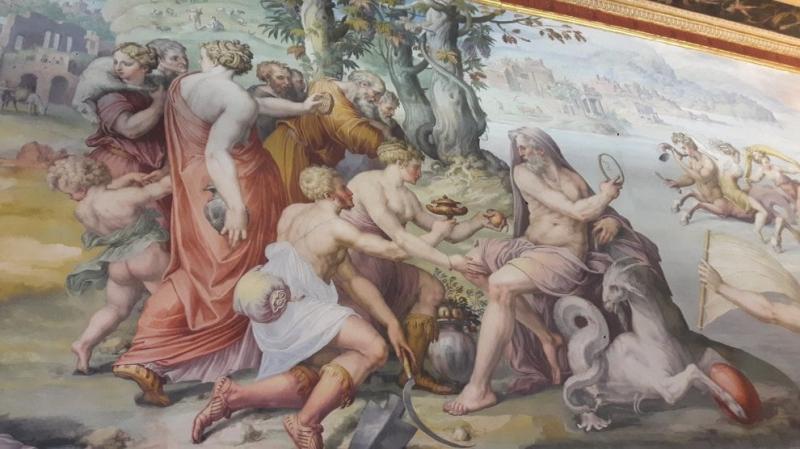After a two-year restoration work, the Sala degli Elementi, on the second floor of Palazzo Vecchio in Florence, has reopened to the public.
The Sala degli Elementi is the first room you encounter when you access the Apartments of the Elements, built between 1551 and 1566 as part of the expansion project commissioned by Duke Cosimo I de' Medici, who would then move into the Apartments.
Work began under the architect and sculptor Battista del Tasso, and was completed by Giorgio Vasari, a Mannerist painter, architect and art historian, and his assistants, after Tasso died. This was Vasari’s first time working for the Medici.
The Apartments consist of five rooms and two loggias. Each room is dedicated to a mythological divinity, corresponding in the lower floor, to a member of the Medici family.
The apartments take their name from the room dedicated to the four elements that were responsible for the origin of the universe, according to ancient mythology.
The walls in the Room of the Elements are filled with allegorical frescoes depicting the four Elements of Air, Water, Fire and Earth. This room corresponds to the underlying Room of Leo X. Just as the Elements were at the origin of all things, Leo X created the premises for the establishment of the Medici Duchy of Tuscany.
The cycle of frescoes begins from the central square of the ceiling, dedicated to Air, evoking the origins of the four Elements generated by the seeds of Uranus scattered by Saturn. The seeds of Uranus fell into the sea and gave rise to Venus, the goddess of Water, who, on one of the walls of the room, rises from the waves surrounded by sea gods.
The frescoes and ceiling of the room were restored thanks to a 800,000-Euro contribution by the non-profit Fondazione Giulio and Giovanna Sacchetti. It is part of the ‘Florence I Care’ project, which works with businesses and private entities to fund the restoration of the city’s vast cultural heritage.
Palazzo Vecchio is the monument symbol of Florence and, for more than seven centuries, has been the seat of its government. The different periods of the history and art of Florence are all represented at Palazzo Vecchio.





